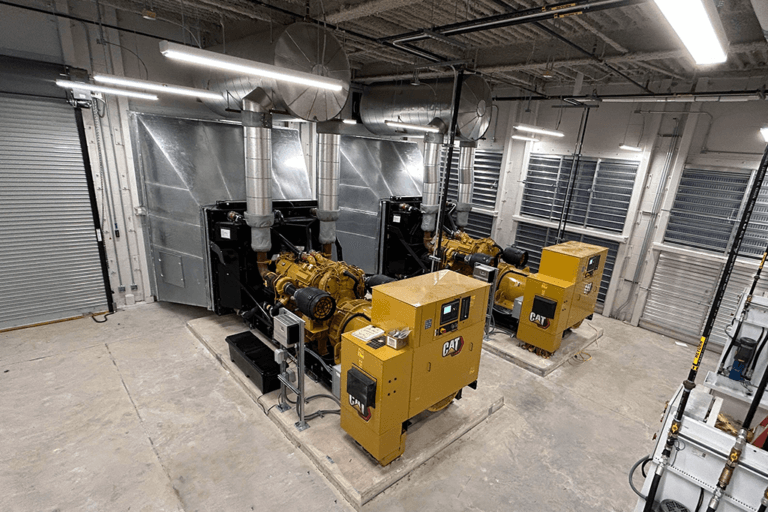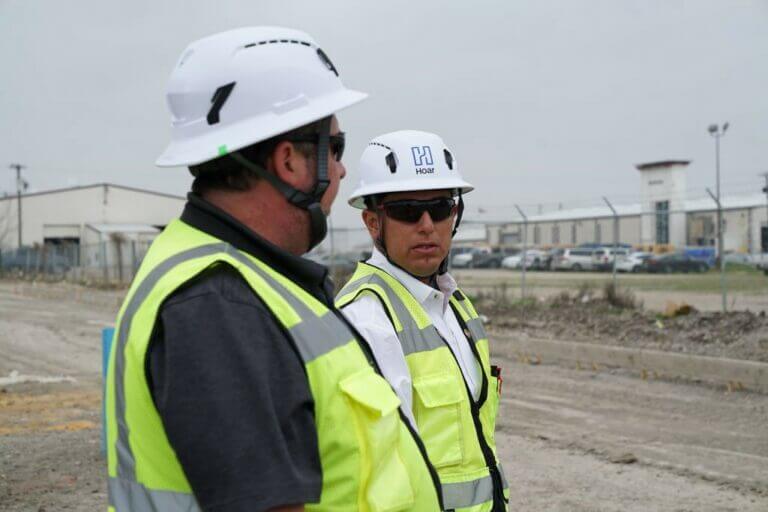
In September of 2020, we wrote our first article on the historically high cost of lumber and its growing demand vs. a shrinking supply. That was one of the first essential building materials severely impacted by the pandemic. Now, almost two years later, the specific materials have rotated in and out, but we’ve continued to face an onslaught of long lead times, supply shortages, and rising construction costs.
The construction industry remains active across the country. Over the past few years, there’s been a multifamily boom in major national cities like Dallas, Houston, Atlanta, Nashville, Charlotte, Orlando, Tampa, Miami, and more. With that level of demand, it’s no wonder that building supplies like appliances, windows, and doors remain high in reported shortages — 88% of builders reported experiencing a shortage while purchasing appliances, 32% of those reported serious shortages.
In that same report, half of home builders reported experiencing a shortage in concrete. Those numbers may be true for single home builders, but I would argue the numbers would be much higher if you polled commercial builders in some of the most active cities in the country. In fact, let’s take a closer look at areas where demand is at historic highs while cement and other raw materials are increasingly difficult to get. The result – a concrete supply chain issue causing delays and problems for developers who can’t get the amount of concrete and block they need in the middle of a construction boom.
IMPACT VARIES BY REGION
For example, Southwest Florida is experiencing what experts predict will be one of the biggest population booms in the country over the next 40 years. The Tampa Bay area’s population grew nearly 6% in just 5 years. With that kind of population explosion, developers have been busy building multifamily properties to keep up with the growing demand for homes close to the coast where people want to be.
Growth is exciting. But here’s where the challenge comes in. The local concrete suppliers are having trouble keeping up with demand due to factors beyond their control, and it’s causing delays, disruptions, and overall difficulties for many active construction projects in southwest Florida. Here’s an overview of what’s behind the ongoing regional shortage for cement:
1. Pandemic Shutdowns
It’s a similar story that launched nearly all the materials shortages we’ve experienced since 2020. When projects halted operations due to COVID protocols, it was too expensive for many cement plants to remain open. When the market turned around, it took time to get their operations back online as they cleaned, rehired staff, and trained new employees. The delay caused an air bubble in the supply chain that we’re still experiencing nearly two years later as demand has stayed high.
2. Geography vs. Deliveries
The same natural beauty that makes southwest Florida appealing to new residents creates nightmare conditions for trying to get cement, block, and concrete ingredients to batch plants and ultimately job sites. Tampa, St. Pete, Clearwater, and Sarasota for example — are surrounded by water with increasing traffic, bridges, haul route restrictions, and limited access points for railway, all of which make it difficult to get bulk materials to their final destination. If your project is even further out on one of the barrier islands, deliveries could take up to two-hours round trip.
3. Transportation Shortages
A shortage of skilled truck drivers as well as congested ports that were holding up shipments have had far reaching negative impacts on the nation’s supply chain of raw materials. In addition, the freight railroads are struggling to keep pace with demand. Some reports say the railroad companies are also experiencing labor shortages. In addition, rail companies are often choosing the most lucrative delivery routes when filling their cars. Looking again at the conditions in southwest Florida, while Tampa, Orlando, and Miami are on the main railway, plants in St. Petersburg or Clearwater have to be serviced by spurs with reduced capacity. Furthermore, return hauls, whether truck or rail, often find themselves empty which is becomes a cost consideration. This is unlike destination markets such as Miami, where ports, mining & manufacturing allow for the next load to be brought north.
4. No National Alternative
This factor is probably the hardest to overcome. Unlike other materials like lumber, steel, drywall materials, roofing materials, etc. If there isn’t enough supply locally, you can’t just reach out to suppliers further out and pay for the materials to be brought in. If you’re working with Ready Mix concrete, you have about 90 minutes to get it delivered and poured before it starts losing its quality. That drastically reduces your options for suppliers and gives you a limited radius to work within.
MANAGING FORWARD
So, how do you maintain the ongoing construction boom in southwest Florida and other parts of the country when supplies are causing extreme challenges? Here’s a few of our best practices that our builders have implemented to overcome the many and ongoing supply problems we’ve experienced.
1. Near Perfect Planning
Easy, right? Just be perfect. Unfortunately, that’s impossible, but what we can do is reduce as much margin of error out of our project plans as possible. In the past, we used to be able to loosely set a concrete delivery for Friday. If we missed it, we’d try again the next day and they’d probably be able to fit us in. Now, suppliers are so tightly scheduled, if you miss your delivery, it’s not a one-day loss — it could be a one week or more loss. You have to plan the things you can control so when factors you can’t control, like a delayed inspection, pop up — it doesn’t derail your entire schedule.
2. Creative Design Assistance
Say a design calls for a 1000-amp panel, but during our design phase research, we learn the lead time on that is 60 weeks. A good contractor with design-assist experience can ask the right questions and help find a creative solution. Are there two available panels that manage the same capacity? Together, the design team and contractor can rework the design to accommodate two panels with regards to wall clearances and other modifications. The end result is the same quality, with an efficient schedule.
3. A Contract Is Not Enough
Years ago, it was enough to sign a contract with a trade partner and trust they’d get their supplies in time to start work. The contract detailed when they needed the supplies on site, and our project managers would check in close to that date and make sure they were on top of it. If they weren’t? Well, we could get the materials in a few weeks with no impact to the schedule. That’s not the case now. Our project managers have to work closely with our trade partners to make sure the materials are ordered well ahead of time. In some cases, we’re signing contracts early and empowering our trade partners to order their materials and store them, so we have assurance the materials won’t be subject to further supply chain impacts by the time we need them.
4. Researched Experts
It’s not enough to just be a good, hardworking builder anymore. To protect our clients’ projects from the ongoing volatility in the industry, we have to continuously educate ourselves and dive deep into market research to know what is coming in terms of supply chain delays and cost surges. We then have to use that knowledge to help our clients make the best decisions for their projects. Our team could suggest adding in cost for warehouse storage into the budget so that we could order materials and appliances early and store them until we’re ready. A multifamily high-rise project might need 400 refrigerators, installed one at a time, a year and a half after the project breaks ground. Instead of waiting and hoping the refrigerators are available by then, we might suggest to purchase now and store those appliances. It’s an added cost to the project up front, but it could pay off in droves if the same appliance shortage we’re experiencing now persists throughout the lifespan of the project.
In some cases, we might suggest to clients to hold off on the construction start date rather than breaking ground but having to halt work down the road. If we’ve done our research correctly, we might see that electrical switch gear has a lead time of up to a year or more. Instead of sitting still in six months while we wait on those materials to be delivered, we could order now, and plan construction to start at a time that won’t result in halted progress. That’s a challenging prediction to make, which is why our teams have to be experts on market trends to make the most educated suggestions to our clients.
We continue to write about the ongoing supply shortage and rising construction costs because they continue to plague our industry. Unfortunately, these are issues we as contractors can’t solve — but we can manage through them. A good builder is one who has earned your trust and can partner with you to mitigate the impact to your project, allowing you to capitalize on local demand for new residential properties, office spaces, local healthcare access — whatever the opportunity — in spite of these challenges.
My final piece of advice is, when choosing the builder for your next project, look beyond their proposed price. I know, I know, it sounds like I’m just advocating for a higher fee. But the truth is, to properly plan for and navigate through these ever-morphing supply chain issues, it takes a larger project team — staff onsite at materials warehouse storage, additional project managers to work closer with trade partners to ensure materials are ordered, a larger preconstruction team to study the market trends and plan accordingly. The right builder with the proper team can help you continue to achieve successful developments in a high demand market, while mitigating your risk to negative impacts from rising costs and dwindling supplies.

